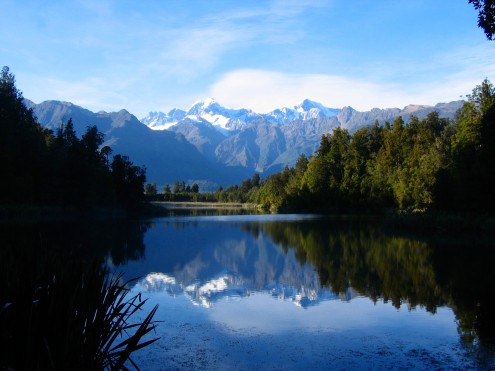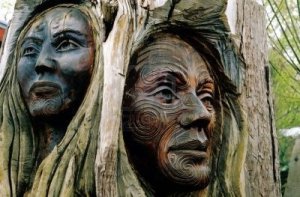There are many historical aconteciments in New Zealand which are the most important happenings for the development of the Australian country.
1893: Universal suffrage is introduced for women aged over 21 (including Māori). New Zealand becomes the first self-governing country to grant the right to vote to all adult women.
SUFFRAGE AND BEYOND
On 19 September 1893 the governor, Lord Glasgow, signed a new Electoral Act into law. As a result of this landmark legislation, New Zealand became the first self-governing country in the world where all women had the right to vote in parliamentary elections.
That achievement was the result of years of effort by suffrage campaigners, led by Kate Sheppard. In 1891, 1892 and 1893 they compiled a series of massive petitions calling on Parliament to grant the vote to women.
Today, the idea that women could not or should not vote is completely foreign to New Zealanders. In 2012, 32% of Members of Parliament are female, compared with 13% in 1984. In the early 21st century women have held each of the country’s key constitutional positions: prime minister, governor-general, speaker of the House of Representatives, attorney-general and chief justice.
1907: New Zealand becomes a dominion. Prime Minister Sir Joseph Ward reads a proclamation announcing that New Zealand has ceased to be colony and is now a dominion.
FROM COLONY TO DOMINION
On 26 September 1907 the colony of New Zealand ceased to exist. New Zealand became a dominion within the British Empire. For a few years some New Zealanders celebrated ‘Dominion Day’ on 26 September with parades and public events. Some banks and law firms closed, with a few keeping up the tradition until the 1950s. Various groups brought the word ‘dominion’ into their titles. In Wellington, the Dominion newspaper began to be published.
When Prime Minister Sir Joseph Ward read the proclamation of dominion status from the steps of Parliament on 26 September 1907, he marked an important symbolic shift in New Zealand’s perceptions of nationhood. This would, he hoped, remind the world that New Zealand was an important player in its own right.
The shift from colony to dominion was a change of name only, so it had no practical effect. New Zealand was no more and no less independent from Britain than it had been before.
Dominion status was more about perceptions – and perceptions matter. Other parts of the Empire also became dominions at this time, for they wanted a distinct status that would not confuse them with lesser ‘colonies’.
1852: The New Zealand Constitution Act (UK) establishes a system of representative government for New Zealand. Six provinces are created, with elected superintendents and councils. At the national level, a General Assembly is established, consisting of a Legislative Council appointed by the Crown and a House of Representatives elected every five years by males over the age of 21 who own, lease or rent property of a certain value.
1867: Four Māori parliamentary seats are created (initially as a temporary measure for five years), with universal suffrage for Māori males aged over 21. The first Māori elections are held in 1868.
MAORI AND THE VOTE
The involvement of the indigenous Maori people in New Zealand’s electoral system is one of the most remarkable stories in this country’s political history.
Although New Zealand’s 1852 constitution was theoretically colour-blind, very few Maori were able to vote in early elections because they owned their lands communally. The wars of the 1860s fuelled debate about Maori representation, and in 1867 four parliamentary seats were set up specifically for Maori. As a result of this legislation, Maori men achieved universal suffrage 12 years before European men.
The history of the Maori electoral system, over 140 years to become a distinctive feature of New Zealand’s political landscape.
1993: A binding referendum changes New Zealand’s voting system from FPP to MMP.
AN ELECTORAL REVOLUTION?
In 1993 New Zealanders voted in a referendum to change their voting system from the traditional first past the post (FPP) method to mixed member proportional representation (MMP). This was the most dramatic change to the country’s electoral system since the introduction of women’s suffrage exactly 100 years before. How and why did this electoral revolution come about?
The origins of electoral reform lay in the gradual breakdown of public trust and confidence in politicians, Parliament and the simple certainties of the old two-party system. This process began in the 1950s and 1960s and gathered momentum in the 1970s and 1980s, decades marked by economic uncertainty and the emergence of new social and political movements.
As critics pointed out, the FPP system tended to create Parliaments quite different in composition to those that the voters appeared to want. The answer, some people argued, was a system of proportional representation in which each party’s share of the seats in Parliament would be close to its share of the overall vote.
1940: The New Zealand Centennial celebrates the signing of the Treaty of Waitangi as the nation’s founding moment, but the celebrations focus mostly on material progress.
THE TREATY IN BRIEF
The Treaty of Waitangi is New Zealand’s founding document. It takes its name from the place in the Bay of Islands where it was first signed, on 6 February 1840. This day is now a public holiday in New Zealand. The Treaty is an agreement, in Māori and English,that was made between the British Crown and about 540 Māori rangatira (chiefs).
Growing numbers of British migrants arrived in New Zealand in the late 1830s, and there were plans for extensive settlement. Around this time there were large-scale land transactions with Māori, unruly behaviour by some settlers and signs that the French were interested in annexing New Zealand. The British government was initially unwilling to act, but it eventually realised that annexing the country could protect Māori, regulate British subjects and secure commercial interests.
Lieutenant-Governor William Hobson had the task of securing British sovereignty over New Zealand. He relied on the advice and support of, among others, James Busby, the British Resident in New Zealand. Missionary Henry Williams and his son Edward translated the English draft into Māori overnight on 4 February. About 500 Māori debated the document for a day and a night before it was signed on 6 February.
About 40 chiefs, starting with Hōne Heke, signed the Māori version of the Treaty on 6 February. By September, another 500 had signed the copies of the document that were sent around the country. Some signed while remaining uncertain; others refused or had no chance to sign. Almost all signed the Māori text. The Colonial Office in England later declared that the Treaty applied to Māori tribes whose chiefs had not signed. British sovereignty over the country was proclaimed on 21 May 1840.
The Treaty is a broad statement of principles on which the British and Māori made a political compact to found a nation state and build a government in New Zealand. The document has three articles. In the English version, Māori cede the sovereignty of New Zealand to Britain; Māori give the Crown an exclusive right to buy lands they wish to sell, and, in return, are guaranteed full rights of ownership of their lands, forests, fisheries and other possessions; and Māori are given the rights and privileges of British subjects.
The Treaty in Māori was deemed to convey the meaning of the English version, but there are important differences. Most significantly, the word ‘sovereignty’ was translated as ‘kawanatanga’ (governance different understandings of the Treaty have long been the subject of debate. From the 1970s especially, many Māori have called for the terms of the Treaty to be honoured. Some have protested – by marching on Parliament and by occupying land. There have been studies of the Treaty and a growing awareness of its meaning in modern New Zealand.
The Treaty of Waitangi is not considered part of New Zealand domestic law, except where its principles are referred to in Acts of Parliament. The exclusive right to determine the meaning of the Treaty rests with the Waitangi Tribunal, a commission of inquiry created in 1975 to investigate alleged breaches of the Treaty by the Crown.
QUEEN ELISABETH´S DIAMOD JUBILEE
Queen Elizabeth II became New Zealand’s monarch on 6 February 1952, following the death of her father, King George VI. This year she celebrates her Diamond (60th) Jubilee, which will be marked by various events around the Commonwealth.
The Queen is New Zealand’s head of state. Under the concept of the ‘divisible Crown’, she reigns as Queen of New Zealand independently of her position as Queen of the United Kingdom. Her title was confirmed by Royal Titles Acts of 1953 and 1974, the latter entitling her ‘Elizabeth the Second, by the Grace of God Queen of New Zealand and Her Other Realms and Territories, Head of the Commonwealth, Defender of the Faith’.
As we shall see, over the six decades of Elizabeth’s reign both New Zealand and its monarchy have changed considerably.
FEMALE IN THE POWER
New Zealand has had six monarchs since entering the British Empire in 1840. Four have been men, but women have dominated the period. Queen Victoria, who came to the throne in 1837, died in 1901. Queen Elizabeth II has reigned since 1952. Together the two women have reigned for 121 of the 172 years since colonisation.
New Zealand’s monarchs have been:
* Victoria: 1840–1901
* Edward VII: 1901–10
* George V: 1910–36
* Edward VIII: 1936
* George VI: 1936–52
* Elizabeth II: 1952–
Names such as Grey, Jervois, Ranfurly and Fergusson dot the New Zealand landscape – on buildings, streets and even entire towns. Many people will not know that the names come from New Zealand’s ‘First Citizens’ – the governors or governors-general who represent the sovereign, currently Elizabeth II.
New Zealand has had a governor or (from 1917) a governor-general since 1840. The first, Sir George Gipps, was also governor of New South Wales and never visited New Zealand. The work of these men and women has reflected the constitutional and political history of New Zealand in many ways.
REFERENCES
TyM Viajeros. (n.d.). New Zeland. Retrieved December 1, 2012, from http://www.nuevazelanda.net
Bissio, R. (2007). Guía del Mundo 2007. Retrieved December 1, 2012, from http://www.guiadelmundo.org.uy/cd/
Portaloceania.com. (2002). Portal Oceania. 2002. Retrieved December 1, 2012, from http://www.portaloceania.com/
Filed under: History
![]()




